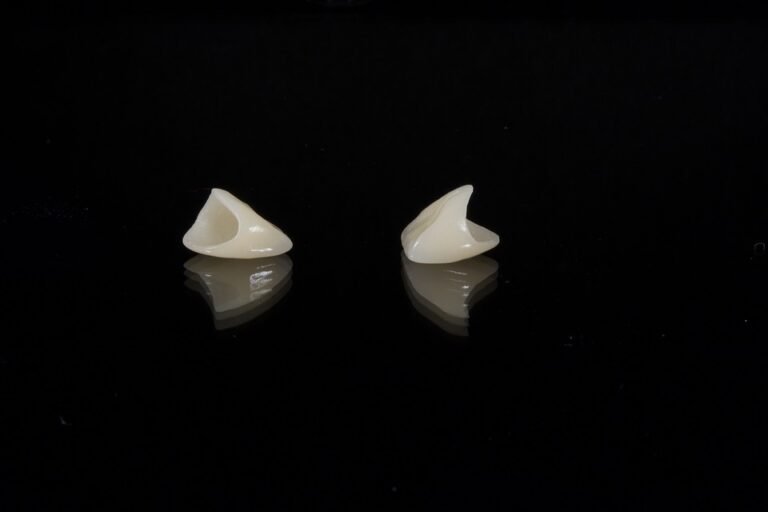How can UX research inform the design of better dental apps
Okay, so I’m working on a project that involves creating a dental app. There are SO MANY out there, but they all seem kind of…terrible? Clunky, hard to use, and honestly, just a pain. I want to actually make an app people want to use, not just something they’re forced to download by their dentist.
I’m talking about apps that help with things like:
- Scheduling appointments (duh, but make it easy!)
- Tracking brushing and flossing habits (with reminders, maybe gamification?)
- Storing dental records and x-rays (securely, of course)
- Finding nearby dentists and specialists
- Providing educational resources on oral hygiene
- Potentially even virtual consultations (video calls with a dentist)
Basically, a one-stop shop for all things dental health.
My question is, how can I leverage UX research specifically to make sure this app is actually user-friendly and addresses real user needs? What are some specific UX research methods I should be considering, and what kinds of questions should I be trying to answer with that research? I want to avoid just throwing features at the wall and hoping something sticks. I want to build something truly valuable.
I’m particularly interested in:
- How to understand the pain points people have with current dental apps (or lack thereof).
- How to tailor the app’s features to different user groups (e.g., kids, adults, people with specific dental conditions).
- How to ensure the app is accessible to users with disabilities.
- How to make the experience engaging and motivating, so people actually use it consistently.
Answer
UX research can significantly inform the design of better dental apps by providing insights into user needs, behaviors, motivations, and pain points. This leads to more intuitive, effective, and satisfying experiences for both patients and dental professionals. Here’s a breakdown of how different UX research methods can be applied:
1. Understanding User Needs and Goals:
- User Interviews: Conduct one-on-one interviews with potential and existing users (patients, dentists, hygienists, office staff) to understand their goals, motivations, and frustrations related to dental care and technology. For patients, this might include managing appointments, understanding treatment plans, accessing educational resources, or communicating with their dentist. For dentists, it could be streamlining appointment scheduling, accessing patient records, visualizing treatment progress, or facilitating communication with patients. The interviews should delve into their current processes, what they find difficult, and what improvements they envision. Specific questions might include:
- "Walk me through your typical experience when scheduling a dental appointment."
- "What are the biggest challenges you face when communicating with your patients about their treatment options?"
- "What information do you find most valuable when reviewing a patient’s dental history?"
- Surveys: Distribute surveys to a larger audience to gather quantitative data on user preferences and pain points. Surveys can be used to validate findings from user interviews and identify trends across a broader user base. Examples include:
- "How satisfied are you with your current method of tracking your oral hygiene habits?" (Scale of 1-5)
- "What features would you find most helpful in a dental app?" (Multiple choice list with options like appointment scheduling, treatment plan visualization, oral hygiene tracking, etc.)
- "How likely are you to use a dental app if it helped you better understand your dental insurance coverage?" (Scale of 1-5)
- Contextual Inquiry: Observe users in their natural environment (e.g., a dental office, at home preparing for a dental appointment) to understand their workflow and identify pain points that they might not be aware of or articulate in interviews. This provides a realistic understanding of how users interact with existing tools and processes. This could involve observing how a dental assistant uses software to schedule appointments and manage patient records or watching a patient track their brushing habits.
- Competitive Analysis: Analyze existing dental apps (and apps in related fields like healthcare or scheduling) to identify their strengths and weaknesses. This helps identify opportunities for differentiation and learn from the successes and failures of competitors. The analysis should focus on usability, features, and overall user experience.
2. Informing Information Architecture and Navigation:
- Card Sorting: Use card sorting exercises to understand how users categorize and prioritize information related to dental care. This helps to create a logical and intuitive information architecture for the app, ensuring that users can easily find the information they need. Users are given cards with different topics (e.g., "Appointment History," "Treatment Plans," "Insurance Information") and asked to group them in a way that makes sense to them. This can be done in person or remotely.
- Tree Testing: Test the navigation structure of the app by asking users to complete specific tasks using a prototype or wireframe. This helps to identify any usability issues with the navigation and ensure that users can easily find the information they need. Users are presented with a text-based version of the app’s navigation and asked to find a specific piece of information. For example, "Find out how to reschedule your upcoming appointment."
3. Optimizing User Interface and Interaction Design:
- Usability Testing: Observe users interacting with a prototype or the actual app to identify usability issues and areas for improvement. This can be done using think-aloud protocols, where users verbalize their thoughts and actions as they use the app. Tasks should be realistic and representative of how users would use the app in their daily lives. Examples include:
- "Schedule a follow-up appointment for a cleaning."
- "Find your dental insurance information."
- "View your treatment plan for your upcoming root canal."
- Eye Tracking: Use eye-tracking technology to understand where users are focusing their attention on the screen. This can help to identify areas of the interface that are distracting or confusing. This data can be used to optimize the placement of important information and calls to action.
- A/B Testing: Test different versions of a design element (e.g., button placement, wording, image) to see which performs better in terms of user engagement and conversion rates. This allows for data-driven design decisions and continuous improvement of the app’s usability and effectiveness. For instance, test two different versions of a "Schedule Appointment" button to see which one results in more appointments being scheduled.
- Heuristic Evaluation: Have UX experts evaluate the app against established usability principles (heuristics) to identify potential usability issues. This is a cost-effective way to identify common usability problems early in the design process. Experts will evaluate the app based on principles like visibility of system status, match between system and the real world, user control and freedom, consistency and standards, error prevention, recognition rather than recall, flexibility and efficiency of use, aesthetic and minimalist design, help users recognize, diagnose, and recover from errors, and help and documentation.
4. Ensuring Accessibility and Inclusivity:
- Accessibility Testing: Evaluate the app for accessibility compliance with guidelines like WCAG (Web Content Accessibility Guidelines). This ensures that the app is usable by people with disabilities, such as visual impairments, motor impairments, or cognitive impairments. This involves testing with assistive technologies like screen readers and keyboard navigation.
- User Testing with Diverse User Groups: Include users from diverse backgrounds, ages, and technical abilities in user research to ensure that the app is usable and accessible to a wide range of users. This includes considering language preferences, cultural differences, and different levels of digital literacy.
5. Post-Launch Optimization and Iteration:
- Analytics Tracking: Track user behavior within the app using analytics tools to identify patterns, pain points, and areas for improvement. This data can be used to inform future design iterations. This includes tracking metrics like feature usage, task completion rates, and error rates.
- User Feedback Collection: Continuously collect user feedback through in-app feedback forms, app store reviews, and social media monitoring. This provides valuable insights into user satisfaction and areas where the app could be improved.
- Remote Usability Testing: Conduct remote usability testing sessions to gather feedback from users in different locations and with different devices. This allows for more frequent and cost-effective usability testing.
By integrating UX research throughout the entire design process, from initial concept to post-launch optimization, dental app developers can create apps that are truly user-centered, meeting the needs of both patients and dental professionals, leading to increased adoption, satisfaction, and ultimately, better oral health outcomes.


